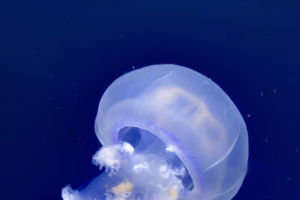Arctic foxes are distributed along the coast of the Arctic Ocean and in the tundra of some islands. They can live on the ice sheet at minus 50 ℃. They like to build nests in hilly areas, and the Arctic fox's nest has several entrances and exits.
Arctic foxes are distributed along the coast of the Arctic Ocean and in the tundra of some islands. They can live on the ice sheet at minus 50 ℃. Arctic foxes like to build nests in hilly areas, and arctic foxes' nests have several entrances and exits. When encountering a snowstorm, they can stay in their nest for several days. Arctic foxes repair and expand their nests every year so that they can live for a long time.
In summer, when food is abundant, Arctic foxes will store some of their food in their nest. In winter, when the food stored in the nest is exhausted, Arctic foxes will track the polar bear and pick up the leftover food. So, in winter, there are always 2 or 3 Arctic foxes following behind the polar bear.
Arctic foxes are known as snow elves. Researchers went deep into the Arctic region to conduct in-depth research on this spiritual animal. They found that Arctic foxes can migrate long distances and have strong navigation skills.
The body color of Arctic foxes varies greatly in winter and summer. Their hair is pure white in winter, and only the tip of their hairless nose and tail are black, which is also a long-term adaptation to the external environment. Arctic foxes change their hair twice a year. In summer, the color of their fur is almost the same as that of frozen soil. Iceland and Greenland even have blue arctic fox variants. In winter, the fur of arctic foxes is even warmer than that of polar bear.


